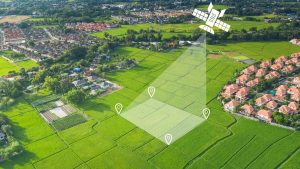At this point, when you say the word “blockchain,” you either get enthusiastic nods or skeptical eye-rolls. But what’s the real deal behind this buzzword? Blockchain isn’t just a fancy tech trend. It’s a foundational shift that could change how we exchange value, prove identity, vote, and even track a tuna fish.
Let’s break it down in human language—and yes, we’ll cut through the hype.
🔍 What Is Blockchain? A Real-World Breakdown

Imagine you and a group of friends are writing in a shared diary. Everyone has a copy. When someone writes a new entry, everyone sees it and agrees on it. That’s essentially what blockchain is—a distributed, unchangeable digital ledger. And it’s way more secure than any shared Google Doc.
📘 The Origins of Blockchain
The first and most famous application of blockchain was Bitcoin, launched in 2009 by the mysterious Satoshi Nakamoto. This peer-to-peer digital cash system didn’t rely on banks. Instead, it used a decentralized network where all transactions were verified and recorded using cryptographic signatures.
💡 Open Source & Transparent
The software was open-source, meaning anyone could inspect, copy, or improve it. And many did. Soon, other blockchains like Litecoin and Namecoin emerged, exploring new use cases.
⚙️ How Does Blockchain Work?
🧱 Blocks, Hashes & Chains
Each transaction is stored in a “block.” Once the block is full, it’s sealed and linked to the previous block—forming a chain of blocks. Each block is stamped with a hash—a unique fingerprint of the data.
🌐 Distributed Nodes
Every node (computer) in the network has a copy of this chain. That’s how blockchain remains tamper-proof and censorship-resistant. You can’t just go back and change something without altering every copy on every computer.
🔐 Cryptographic Signatures
To validate a transaction, your private key (like a password) is used to sign it. This guarantees authenticity and ownership.
📊 Types of Blockchain
| Type | Description | Examples |
|---|---|---|
| Public | Open to everyone; transparent & decentralized | Bitcoin, Ethereum |
| Private | Permissioned; controlled by one organization | Hyperledger, R3 Corda |
| Consortium | Semi-decentralized; controlled by a group | IBM Food Trust, Energy Web |
| Hybrid | Combines public and private features | XinFin, Dragonchain |
🧩 Key Components of Blockchain
1. Distributed Ledger Technology (DLT)
This is what allows everyone to have the same updated record.
2. Consensus Mechanisms
The system’s way of agreeing on the state of the network:
-
Proof-of-Work (PoW): Energy intensive, used by Bitcoin.
-
Proof-of-Stake (PoS): Faster, greener, used by Ethereum 2.0.
3. Smart Contracts
Self-executing programs that run when conditions are met—like a vending machine for agreements.
🚀 Major Blockchain Platforms in 2025
-
Ethereum: Smart contract king, despite its 2016 DAO hack.
-
Solana: Known for blazing speed.
-
Polygon (MATIC): Ethereum’s cheaper, faster helper.
-
Binance Smart Chain: Centralized but efficient.
🌎 Blockchain Beyond Cryptocurrency
🛒 Supply Chains
Companies like Walmart use blockchain to track food freshness.
🏥 Healthcare
Hospitals store records securely and share them across borders.
🗳️ Voting
Tamper-proof elections via digital identity? Yes, it’s happening.
🌐 Metaverse & NFTs
Own a virtual Gucci bag? You probably paid for it on-chain.
📉 The ICO Boom & Crash
ICOs (Initial Coin Offerings) were like the wild west of investing. Some made millions. Others… lost everything. Most ICOs had no product—just hype.
💥 The FTX Collapse
FTX, once a top crypto exchange, went belly-up in 2022. Why? Mismanagement, lack of transparency, and a lot of fraud. Over $8 billion of customer funds vanished. The trust in crypto? Shattered.
🏢 Business Use Cases of Blockchain
| Sector | Use Case | Company Example |
|---|---|---|
| Banking | Settlements & Compliance | JPMorgan, HSBC |
| Retail | Supply Chain Transparency | Walmart, Carrefour |
| Healthcare | Recordkeeping & Drug Tracking | IBM Watson |
| Real Estate | Digital Titles & Property Transfer | Propy, ShelterZoom |
⚠️ Blockchain’s Challenges
-
Scalability: Still hard to scale without losing speed.
-
Regulation: Governments are confused—or cracking down.
-
Energy Use: Some blockchains consume as much energy as small countries.
-
Security: Code errors or poor practices lead to hacks.
📉 Blockchain vs Traditional Systems
| Feature | Blockchain | Traditional System |
|---|---|---|
| Transparency | High | Low |
| Speed | Medium (improving) | High (in centralized models) |
| Security | Very High (if coded right) | Medium |
| Intermediaries | None | Multiple |
| Cost | Lower long term | Higher |
🔮 The Future of Blockchain (2025–2030)
From digital passports to decentralized streaming platforms, blockchain will expand. But its adoption depends on usability, regulations, and solving energy and speed issues.
It’s not about when blockchain will take over. It’s about how seamlessly it can fit into our digital lives.
🧾 Conclusion
Blockchain isn’t just about Bitcoin or hype coins. It’s about building a secure, open, and decentralized digital future. While scams, crashes, and chaos have plagued the industry, the foundational technology remains strong. Like the early internet, it’s going through its awkward teenage years—but the future looks promising.
❓ Frequently Asked Questions (FAQs)
1. Is blockchain only used for cryptocurrencies?
Nope! Blockchain is being used in voting, healthcare, logistics, and even gaming.
2. Can blockchain be hacked?
Not easily. The tech is secure, but poor coding or human errors can lead to vulnerabilities.
3. What is the most energy-efficient blockchain?
Blockchains using Proof-of-Stake, like Ethereum 2.0, are far more energy-efficient than Bitcoin.
4. Is investing in blockchain safe?
It’s high risk. Always do your research, especially with altcoins and ICOs.
5. Do I need to understand coding to use blockchain?
Not at all! Many blockchain apps have user-friendly interfaces.




